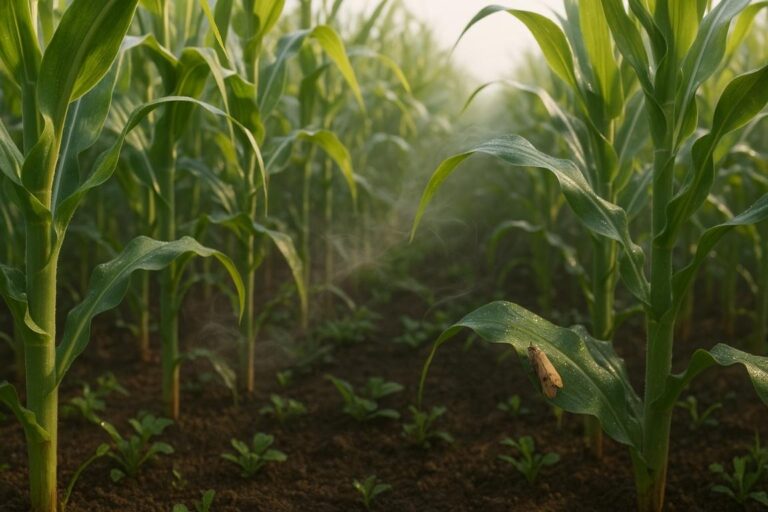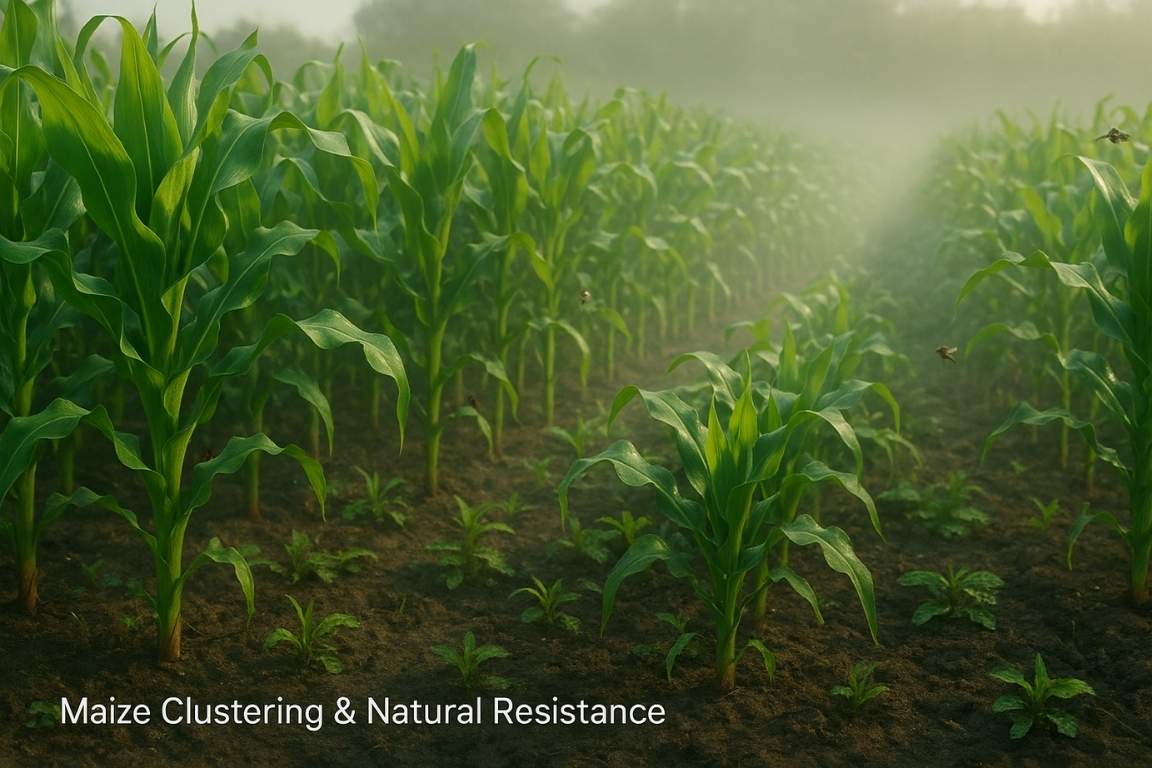A new study published in science by researchers from Zhejiang University (China), along with found that clustering maize plants closely improves natural insect resistance through plant communication using linalool.
Background
- Maize is one of the world’s most widely grown grains, vital for food, animal feed, biofuel, and industrial products.
- However, monoculture farming makes maize highly vulnerable to pests and diseases.
- Climate change may further reduce maize productivity by up to 24% by the late 21st century under high-emission scenarios.

Key Findings of the Study
- Crowded Fields Improve Defence: Maize plants grown in dense clusters emit more linalool, a natural volatile compound, when attacked by insects. This chemical signal alerts neighboring plants to activate their defence mechanisms.
- How It Works
- Step 1: Insect attack triggers linalool release.
- Step 2: Neighboring plants detect linalool and activate jasmonate signalling (a stress-response pathway).
- Step 3: Plants release HDMBOA-Glc into soil.
- Step 4: This metabolite enriches beneficial soil bacteria, which trigger salicylic acid signalling in nearby plants.
- Result: Broad resistance to insects, nematodes, fungi, and viruses.
- Experimental Evidence
- Linalool-deficient maize mutants failed to develop this resistance.
- Applying synthetic linalool restored defences, confirming its key role.
- Trade-off
- Plants in high-density fields gain better pest resistance, but grow slower and produce less biomass — showing a growth-defence trade-off.
Significance
- Provides a natural, chemical-free pest management method.
- Reduces dependence on pesticides and supports sustainable agriculture.
- Helps farmers manage pest threats based on local conditions.
Future Applications
- Breeding Programs: Identify maize varieties more responsive to linalool signalling using genomic markers and reporter genes.
- Precision Farming: Farmers can apply linalool externally when pest threats rise, or disable it when pest pressure is low to improve yield.
- Policy Relevance: Supports Integrated Pest Management (IPM) and climate-resilient agriculture under SDG-2 (Zero Hunger).
Agricultural & Climatic Requirements of Maize
Feature | Requirement / Preference |
Temperature | Generally, grows best at 21-27°C. Sensitive to frost; excess heat especially during flowering can reduce yields. |
Rainfall | Needs 500-1000 mm (50-100 cm) during growth period; drought stress reduces yield, but also doesn’t tolerate waterlogging. |
Soil | Well-drained soils: alluvial, loamy, red loamy; pH around 5.5 to 7.5. Fertile soils with good moisture retention are good. |
Altitude | Can be grown from sea level up to about 3000 m above mean sea level, depending on variety. |
Season | Three main seasons: Kharif (main season), Rabi, and sometimes Summer (Zaid). Yields vary by season. |





